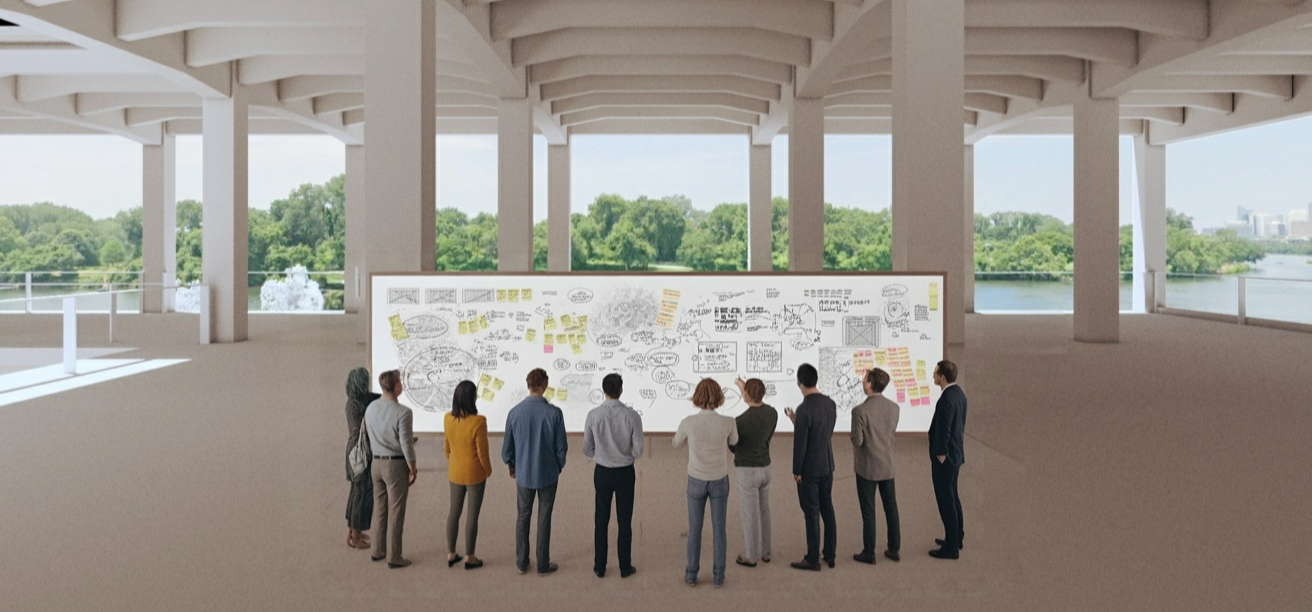From Structure to Symphony: A Polyphonic Guide to Organizational Models, Energetic Value, and Regenerative Wealth
Inspired by our global ecosystem…
I. Introduction: Beyond Partnerships—Into Organizational Being
This guidebook reframes how we understand organizational models. Rather than viewing public, private, and nonprofit sectors merely as legal categories or vehicles for partnership, we treat them as distinct energetic species within a larger polyphonic ecosystem of co-creation.
We move from partnerships as transactions to systems as frequencies—from legal structures to living archetypes.
Each model expresses a unique rhythm of time, culture, governance, and value. When composed together with intention, they create a polyphonic system of regenerative wealth and social evolution.
II. Definition: What Is a Polyphonic System of Co-Creation?
A polyphonic system of co-creation is a collaborative framework where multiple distinct voices, rhythms, and worldviews co-exist in intentional creative tension, producing more resilient and dynamic value than any single actor could alone.
Drawing from polyphony in music (where independent melodies harmonize), such a system:
Centers difference as generative
Honors decentralized authorship
Embraces timing mismatches
Designs with multiple intelligences
Tunes relationships, not just roles
III. Organizational Archetypes as Energetic Forms
In a polyphonic system, organizations are not merely legal structures—they are energetic beings, each with their own rhythm, orientation, and value flow. Just as instruments in an orchestra bring unique sounds that contribute to the whole, each organizational archetype holds a distinct frequency of behavior, governance, and time.
This table does not attempt to reduce complex institutions to simple traits—instead, it maps the essence and energetic behavior of each model as a way to design coherence, alignment, and creative tension between them.
We invite you to read these archetypes not just as forms to analyze, but as forces to harmonize. Each carries strengths, limitations, and shadows. When intentionally composed together, they allow for regenerative co-creation across sectors, timelines, and cultures.
IV. Layers of Time: Financial Oscillation & Rhythm
Inspired by Stewart Brand's pace layering, each organizational model also moves according to different temporal rhythms:
V. Value Creation, Capture, and Circulation
Each model is defined by how it creates, captures, and holds value:
VI. Designing Interoperability: From Harmony to Practice
Each organizational form can be seen as a musical section in a polyphonic symphony:
Public = Percussion (steady, foundational)
Private = Brass (loud, powerful)
Nonprofit = Strings (emotive, sensitive)
Coop = Bass (grounding, relational)
DAO = Synths (abstract, experimental)
To design ecosystems of co-creation:
Recognize the distinct role each plays
Tune interactions through ritual, pacing, governance clarity
Embed cultural, energetic, and temporal alignment tools
VII. Capital, Governance, and Frequency
The toolkit’s principle that governance + risk = wealth architecture holds across all models.
But each defines risk and wealth differently:
Public: Risk = public backlash; Wealth = stability
Private: Risk = market loss; Wealth = capital gain
Nonprofit: Risk = burnout/loss of trust; Wealth = mission relevance
Coop: Risk = disunity; Wealth = cohesion
DAO: Risk = code failure; Wealth = community consensus
Each system can be tuned by:
Aligning capital flows with pace layers
Embedding ritual governance (weekly syncs, full moon reviews, seasonal cycles)
Treating capital as ceremony, not just input
VIII. Dimensional Diagnostic Tool
Purpose: To help organizations assess their dimensional coherence and polyphonic alignment across 2D (flat structure), 3D (operational embodiment), 4D (temporal cycles), and 5D+ (vibrational integrity).
Use this tool as a monthly or quarterly reflection mechanism to re-align structures, stories, and strategies with multi-dimensional integrity.
VIII. Closing Invocation: The Embodied Value System
These models are not in competition.
They are organs in a living body, or instruments in a wider song.
Their power is not in standardization—but in resonance.
Some move like fire—quick, hot, catalytic.
Some like soil—slow, grounding, regenerative.
Others flow like water, structure like stone, or hover like air—each expressing different dimensional truths.
To create systems of regenerative value, we must:
Honor the pace and power of each model
Hold creative tension, rather than demand uniformity
Design for rhythm, not control
Operate across dimensions, not just functions
Use the Dimensional Diagnostic Tool not as a scorecard—but as a mirror of frequency.
Let it show you where your organization is rooted.
Where it flows.
Where it vibrates in coherence—and where it longs for re-alignment.
Let your organization be a tuning fork, vibrating with your deepest values.
Let your partnerships be polyphonic, not performative.
Let your systems be alive, sovereign, and sacred.
Because the future of value is not in what you extract, but in what you orchestrate.
Not in what you own, but in what you harmonize.
This is the music of emergence.
And you are a conductor of the field.
Attribution & Lineage Acknowledgment Inspired by:
Stewart Brand (Pace Layering)
Nikola Tesla + Wallace D. Wattles (Energetic Laws of Wealth)
Buckminster Fuller (Design Science)
Elinor Ostrom (Commons)
Donella Meadows (Systems Leverage)
Adrienne Maree Brown (Emergent Strategy)
Harry Bernstein, Dave Cove, Alexander Schooner, Diane O’Neal (Consciousness OS)
Indigenous wisdom from Pacific, Andean, and Afro-diasporic traditions
This Guidebook was composed through the systems synthesis of the ecosystem partners we are uniting. Join us.
_
Modern Ancients | The Philosophy Designing Systemic Intelligence for the Future of Work.











